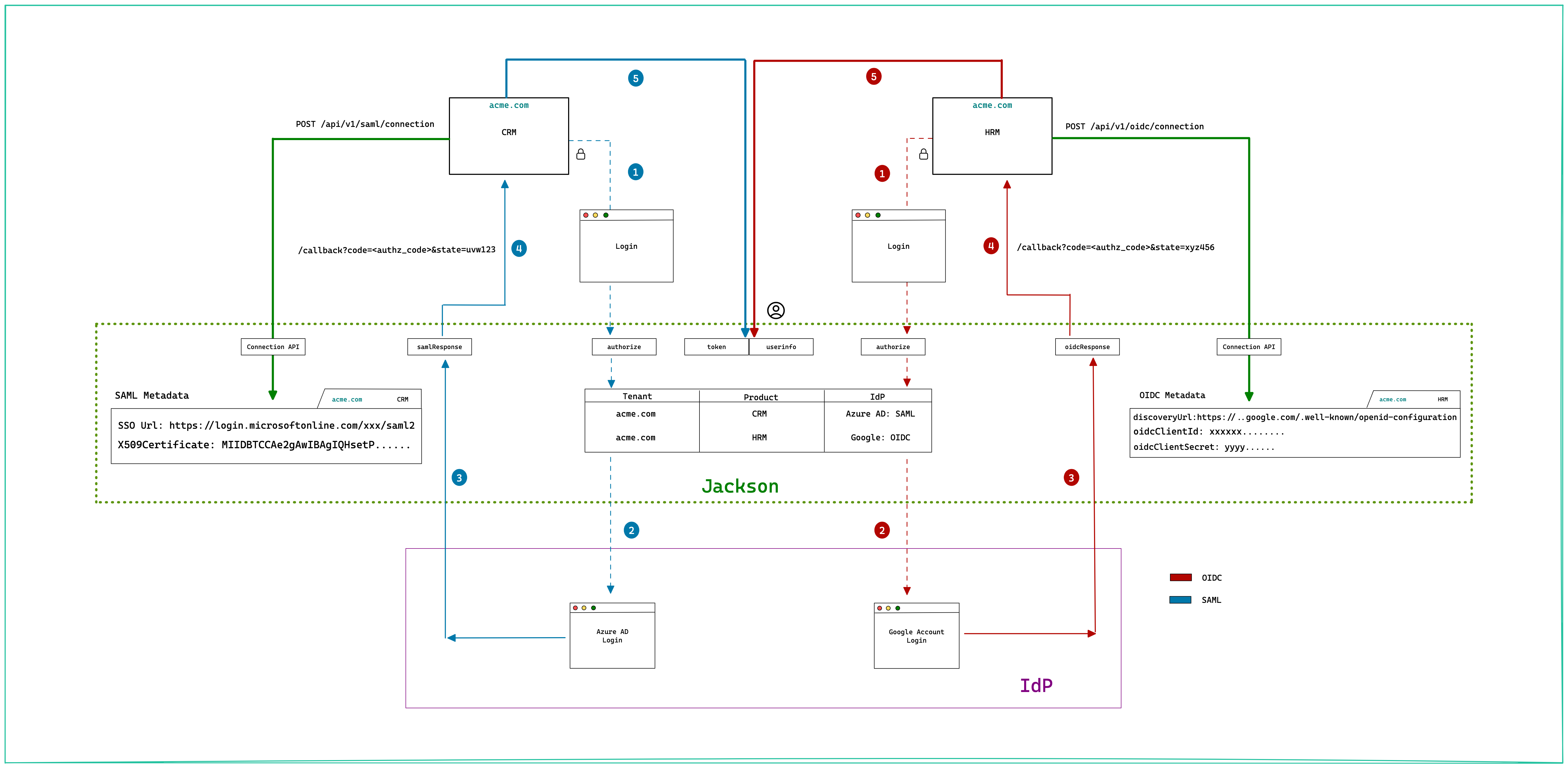Example flow
Scenario
Let's say you have a customer acme.com who is using two of your SaaS offerings. For now let's call them:
CRM (Customer Relationship Management)- Should integrate with the customer (of acme.com) facing SAML Identity Provider (Azure AD)HRM (Human Resource Management)- Should integrate with the Google workspace account ofacme.comemployees.
Let's see how SSO works in this case.
Configure the SSO Connection
First as the application developer, you'll need to add the SSO connections for CRM and HRM. This will be saved (marked as SAML Metadata and OIDC Metadata in the below diagram) within Jackson and later used to orchestrate the IdP login.
Login flow
Jackson uses the Authorization Code flow as outlined by the numbered steps below.
- The Client (Browser app) initiates the login by redirecting to Jackson
authorizeendpoint. Jackson will parse the tenant/product in the request and use it to redirect the user to the configured IdP. - Step 2 varies based on the Identity Provider type. For SAML IdP, Jackson would construct the SAML request, sign it and send it to IdP. The IdP validates the request and redirects the user to the login screen. For OIDC IdP, Jackson constructs an OpenID Connect request and redirects the user to the OIDC Provider authorization endpoint.
- Once the user is logged in successfully, the IdP redirects back to Jackson. For SAML, the response contains the user profile. In the case of OIDC, the response contains the authorization code that is used by Jackson to obtain token and userprofile from the OIDC IdP. Jackson generates a short lived code and stores the user profile against it.
- The authorization code generated in the previous step is sent to the client app.
- The client
exchangesthe code for token and uses it to query theuserInfoendpoint of Jackson to get the complete user profile.
